Independent Collectors
Karsten Schmitz
Art collector, art philanthropist, social entrepreneur and the developer of one of Germany’s largest contemporary art spaces, the internationally renowned Leipziger Baumwollspinnerei, Karsten Schmitz shares his vision of how artistic, architectural, as well as the social metamorphosis of art spaces can transform the lives of artists, the public, even entire cities.
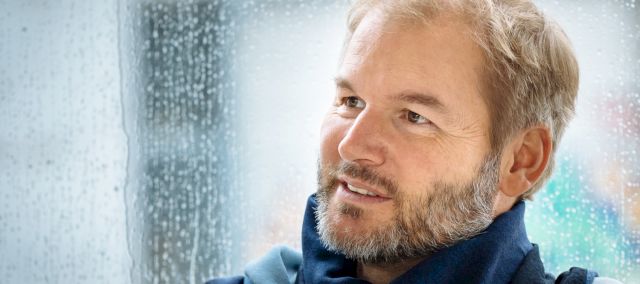
‘Art is one of the most powerful forces in the rise of mankind, and he who renders it accessible to as many as possible is a benefactor of humanity,’ verbosely stated Hungarian composer and philosopher Zoltan Kodaly. Whilst Karsten Schmitz would probably agree with the first sentiment wholeheartedly, he is most likely far too modest to lay claim to the second, despite his track record.
Yet, for time eternal, patronage has been a fundamental contributor, not only in helping to facilitate artistic process and practice, but also in bringing art to the public sphere. But whereas some benefactors may enjoy seeing their names in bright lights and capital letters atop of their self-monikered life achievements, others like Schmitz prefer to remain cloaked in relative anonymity, adding silently to the cultural fabric as it drapes itself around us. As Schmitz succinctly puts it: ‘I want to facilitate these platforms for both artists and the public. I don’t need to be the platform itself.’
My main focus and motivation is to achieve a positive relationship to the society in which we operate.
KARSTEN SCHMITZ

There is a sense of steady calm and purpose to Schmitz, as he sits in his light filled Munich project room. The door to the office is the first insight to a man wholly guided by artistic principal in the form of a studded mattress that happens to be an installation named Schleuse or Lock from Berlin-based artist and curator Tilo Schulz.
It is here that Schmitz sits at the helm of the Federkiel Foundation, which patronizes a myriad of arts projects, including partnering with artists like Schulz to fund new works, residencies, and exhibitions, and working with sites, such as the Spinnerei to facilitate urban renewal, set up an expanding dialogue between society and art in new social environments and promote arts education. However, the 47-year-old with a penchant for dapper scarves is also the wearer of many metaphorical hats, heading projects in arts consultation, education (he co-founded the Montessori School Monte Balan school in Munich), restaurants, as well as renewable energy and ecological projects.
The common thread that runs through his businesses is a sense of community and social responsibility, working towards making a positive contribution to changing and creating the world around him. ‘My main focus and motivation is to achieve a positive relationship to the society in which we operate,’ he said.
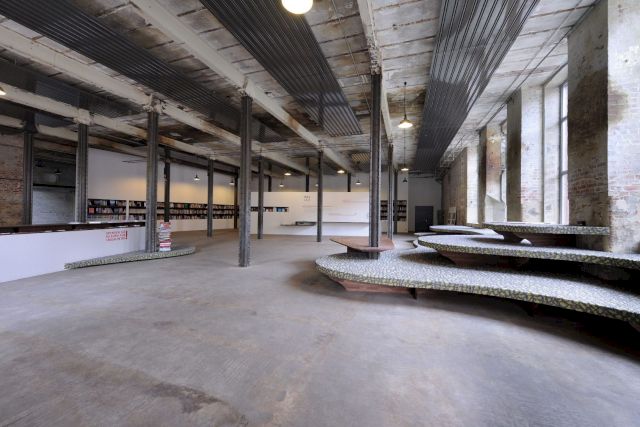
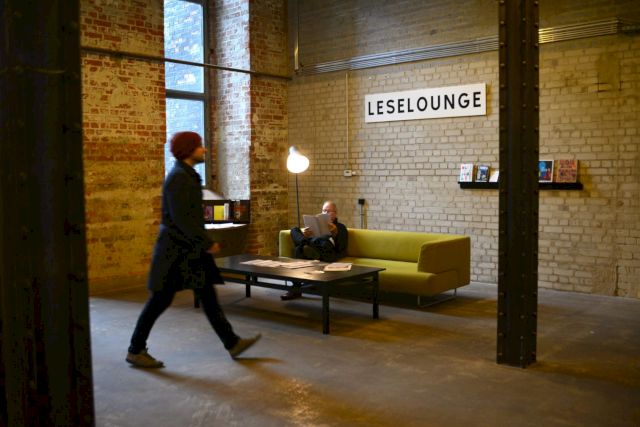
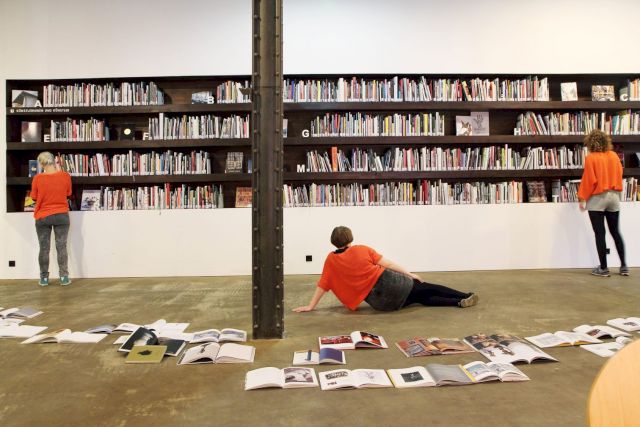

It was just two years after the Berlin Wall fell. There was a great sense of freedom both artistically and culturally.
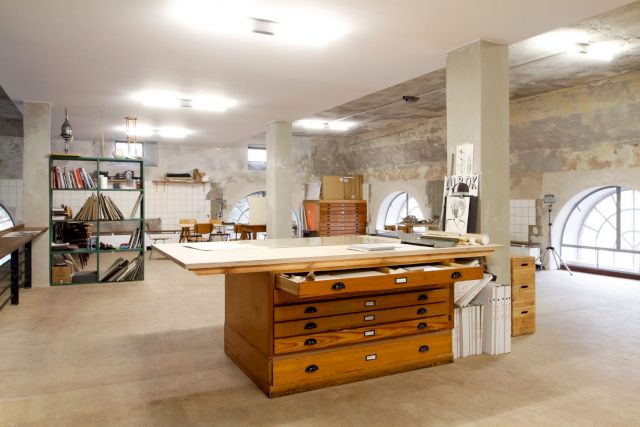
However his pivotal transformational moment as a collector came in 1991, when attending an ART Frankfurt, where he met and struck up a friendship with the artist KAESEBERG and his gallerist Judy Lybke from Leipzig, when he purchased two of the artist’s works. Drawn by the equally charismatic artist and gallerist, Schmitz made his first fateful visit to Leipzig.
Post reunification, he discovered an art scene thriving in the ashes of the GDR and providing a whole new exciting political, economical and social narrative that explained and overlooked the old, yet always looked towards the future. ‘It was just two years after the Berlin Wall fell. There was a great sense of freedom both artistically and culturally. Artists had free reign in the city to create. I remember the overwhelming feeling of freedom I felt sitting on a rooftop with KAESEBERG drinking beers, as we looked over Leipzig looking at all these factories and warehouses that artists were reclaiming as their own.’
Over the next ten years, Karsten and Tina Schmitz became heavily involved in both the blossoming Berlin and Leipzig art scenes, working with a selection of artists such as KAESEBERG, Tilo Schulz, Martin Eder, Christine Hill, Benjamin Bergmann, Olaf and Carsten Nicholai, Thomas Thiede, amongst many others; working being the operative word. ‘For me, my interest in art is more than collecting,’ said Schmitz. ‘I am fascinated as much by the intellectual process of making art, as much as the actual work that is produced. Hence, I like to accompany artists’ careers and their development.’
People thought we were crazy, but there was already such a special atmosphere to the place.
KARSTEN SCHMITZ
It was for this reason that the Federkiel Foundation came into existence, whether that was providing spaces for artists to work, funding large-scale projects or simply providing grants for airfares and materials. Then in 2001, in what was a chance to embody all of the philosophies Schmitz had already put into practice, he became the third partner in the Spinnerei, a former cotton spinning mill in Leipzig that was still a working factory in 2000.
The remit was as massive as the giant red smokestacks that loomed over the city from the site in the run down western district of Plagwitz: the redevelopment of an industrial complex over a hundred years old, with 20 buildings on a site measuring approximately 10 hectares and with 80 000 m2 of usable space, only about 6 000 m2 of which had sixty tenants. Fifty percent were artists, including Neo Rauch, KAESBERG, and various other high-profile Leipzig artists.
‘People thought we were crazy, but there was already such a special atmosphere to the place,’ recalled Schmitz, his voice considered, as he cast his mind back to 2001. ‘The banks didn’t want to give us money as the post reunification East German property market had cooled, but we instinctively knew that it was the right time to undertake the project.’
Sustainability opened up a new era of innovative thinking – essentially balancing social and private interests, as well as considering the interest of future generations.
KARSTEN SCHMITZ
Understandably, the word development usually sends artists recoiling in horror at the thought of the coming gentrification, the loss of autonomy and rising rents that they can ill afford. Traditionally artists’ voices are drowned out, as money always has a habit of talking louder. Yet having Schmitz on board meant there was already an element of trust. ‘As chairman of an art foundation, and as an art lover and collector, I wasn’t involved in developing real estate or developing towns, I was in the business of developing art, but from a philosophical standpoint,’ he said.
Hence the biggest question was how do you strike a balance between change and yet retain what already exists, without pricing and excluding the artists out of the process? Fundamental to a happy resolution was a consultation process that came about after Federkiel Foundation and the Leipzig born Frank Motz, curator of ACC Galerie Weimar, initiated a groundbreaking symposium called How Architecture Can Think Social. ‘It was truly a collaborative international process involving thirty people from both the east and west of Germany, Europe and America,’ said Schmitz.
What eventuated from this meeting of minds was a mix of the commercial with non-commercial. Ten galleries, including the new site of the Judy Lybke gallery, EIGEN + ART in the Spinnerei’s steam engine hall, that went on to consolidate the rise of the increasingly internationally successful New Leipzig School, putting Leipzig firmly on the global art’s radar. Meanwhile Jochen Hempel’s gallery Dogenhaus and the newly founded ASPN took up residence, as did Galerie Kleindienst and maerzgalerie. Thanks to Jochen Hempel’s international network even the Brooklyn-based gallery Pierogi opened a branch gallery at the Spinnerei. There are now over 120 artists’ studios, a small hotel and numerous firms working in the creative industries.
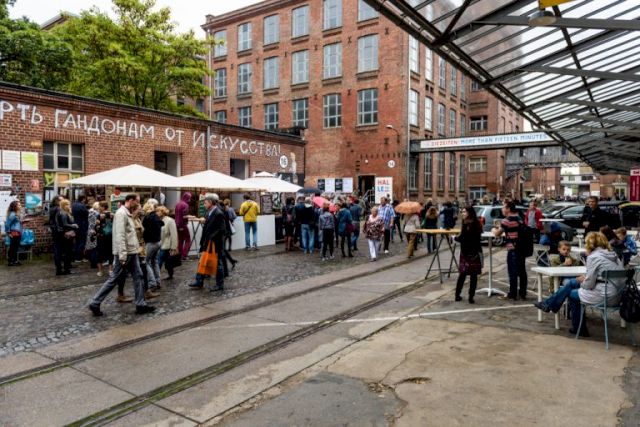
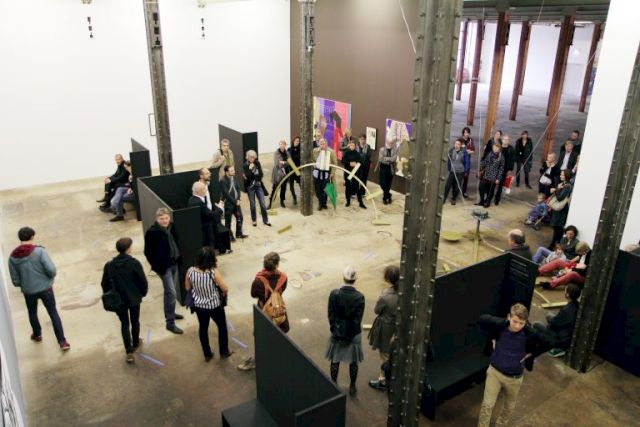

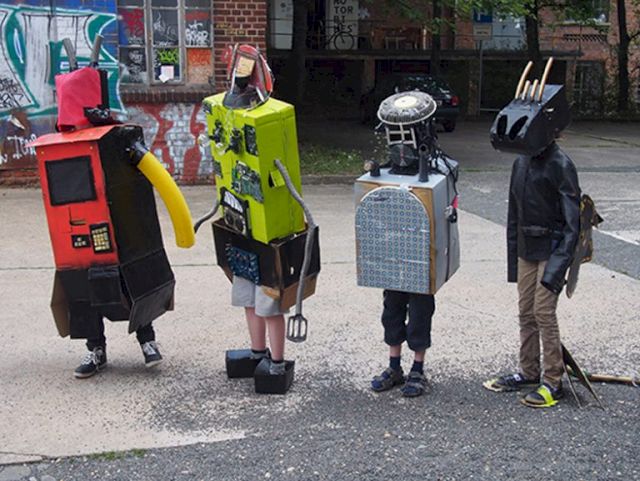
However for Schmitz, one of the greatest achievements was the non-commercial side of the project. The founding and development of the five-storey industrial building HALLE 14, with a total area of 20,000 square meters, which runs as a non-profit independent arts centre.
A communal multi-cultural atmosphere was deliberately nurtured. The main projects include residences for both German and international artists. This global perspective is carried through to the big group exhibitions three times a year, which are a hallmark for community engagement. HALLE 14 opens up its vast spaciousness and asks artists to riff off pertinent societal positions. Recent themes include ‘Trusted Time’ and ‘Does Humor belong in Art’.
It also draws in the stars of the art world as featured guests. After the Tate Modern in London showed Jessie Aron Green’s ginormous video installation Schreiber in 2010, it showed here. Whilst in 2005, Carsten Nicolai, of whom the foundation’s Sculpture Fund had provided the funds to facilitate an incredibly ambitious sculpture named ‘frozen water’ at the Venice Biennale, it made a tidal wave size splash at the Spinnerei.
I am fascinated as much by the intellectual process of making art, as much as the actual work that is produced.
KARSTEN SCHMITZ

There is also a platform for the international art community to join in the dialogue. The Terra Nullius group show offered an Australian perspective on contemporary art, whilst Pause the Pulse: Portrait of Accra brought Ghanaian artists to a broader audience.
‘Our mission was to create a communal space where art could be created, viewed and discussed. Where an international community of artists could interact not just with one another, but also with the wider community,’ said Schmitz. Hence there is a café, workshops, and an arts library that for the past eight years has collected over 36,000 artists’ books including sourcing books from international art fares to create an entire epoch of cultural history. Everyone is welcome.
Another of Schmitz passions is seeding a love of the arts in the young. ‘When the gallerists came to the Spinnerei, the local kids lost a little of their adventure playground,’ he said. ‘So in 2005, we moderated a process with the artists on site, to provide workshops and projects for local children, the most popular being a comic workshop! It’s one of the most important aspects for me, as it gives kids a sense of how art happens and how they can be a part of it.’
The Spinnerei project has gone on to become somewhat of a roadmap for the international arts community in sustainable and community minded development. Now after the learning curve of the Spinnerei, Schmitz and his team are excited to bring a new cultural identity to Munich, turning their attention to launching UNDER (DE) CONSTRUCTION, a new creative quarter in Munich that draws conceptually on the experience of the Spinnerei, as a realized cultural and social project. ‘It’s a process-related development,’ said Schmitz. ‘But the legacy to the city will be a redefining of how it sees itself.’
Our mission was to create a communal space where art could be created, viewed and discussed. Where an international community of artists could interact not just with one another, but also with the wider community.
KARSTEN SCHMITZ
Meanwhile back in Leipzig, the Spinnerei continues to define its surrounding in Plagwitz, without making everyone else a victim of its success. Ten years on, the area has retained its bohemian vibe. ‘It wasn’t a case of rampant gentrification, which usually involves bringing new wealthy individuals in, whilst forcing people out – usually the very creative people, who breathed life into it in the first place. The Spinnerei has benefitted the whole area and given it a new stability. It’s been a seamless integration that happened quite naturally.’
Yet the real proof comes in the participation. On the big gallery weekends, an estimated 20,000 visitors come to engage with the creativity, the artists and explore the Spinnerei and its surrounds. And that is beneficial for everybody.